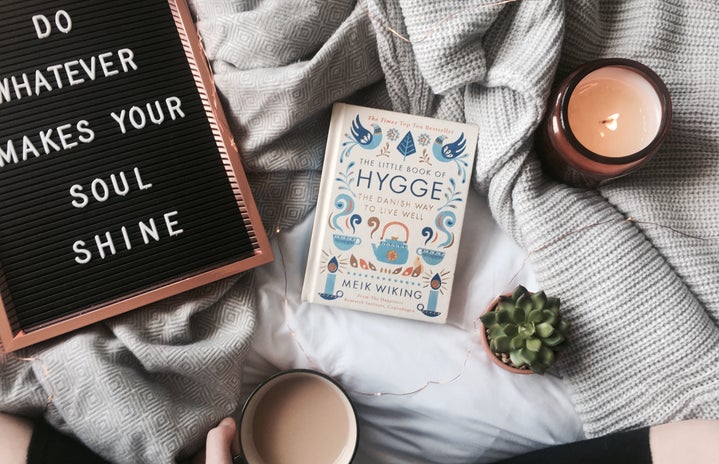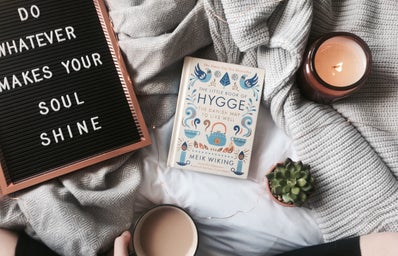Have you been stressed out lately? Maybe it’s time for a lifestyle change. In fact, the Hygge lifestyle might be perfect for you. Popular in Denmark, it aims to be as cozy as possible. We’re talking fuzzy blankets, lighting candles and eating comforting food. I’m not saying it’s the sole reason why Denmark’s one of the happiest countries in the world, but it might just be.
All you have to do is buy this little book,or any of the other books that’ll guide you through this comforting lifestyle. Maybe, just maybe, you’ll buy this $30 candle. You know, for your lifestyle change.
Okay, time to break away from the sarcasm. I’m here to seriously discuss Hygge. I’m not opposed to it in theory. There’s nothing I appreciate more than a cup of hot cocoa by a roaring fire. However, the marketing of this lifestyle is awfully aggressive for such an innocent concept.
When I was in Denmark, “The Little Book of Hygge” seemed to follow me wherever I went. It greeted me in the airport when I landed in Copenhagen. It was in the shops in the train station. It was even lurking behind the windows of various shops that I encountered while walking down the street.
But it’s not just the author of this book that’s capitalizing on the hunt for happiness. Googling the term ‘hygge’ will yield several (expensive) things that you can buy. A cozy blanket from Target is cheap, but is it worthy of Hygge? That might require this $200 aesthetically pleasing blanket.
People will always be on the hunt for happiness. It’s no wonder so many search for what makes happy people happy. But these marketers won’t tell you that the Danish are also some of the wealthiest people in the world and have shorter work weeks. Instead, they’ll throw the trendy word ‘hygge’ on anything that they want to scam people into buying.
‘Hygge’ doesn’t require expensive products. It can be just as easily achieved with cheap comforts. Comfort doesn’t require forking over every penny. Hygge with caution, my friends.



